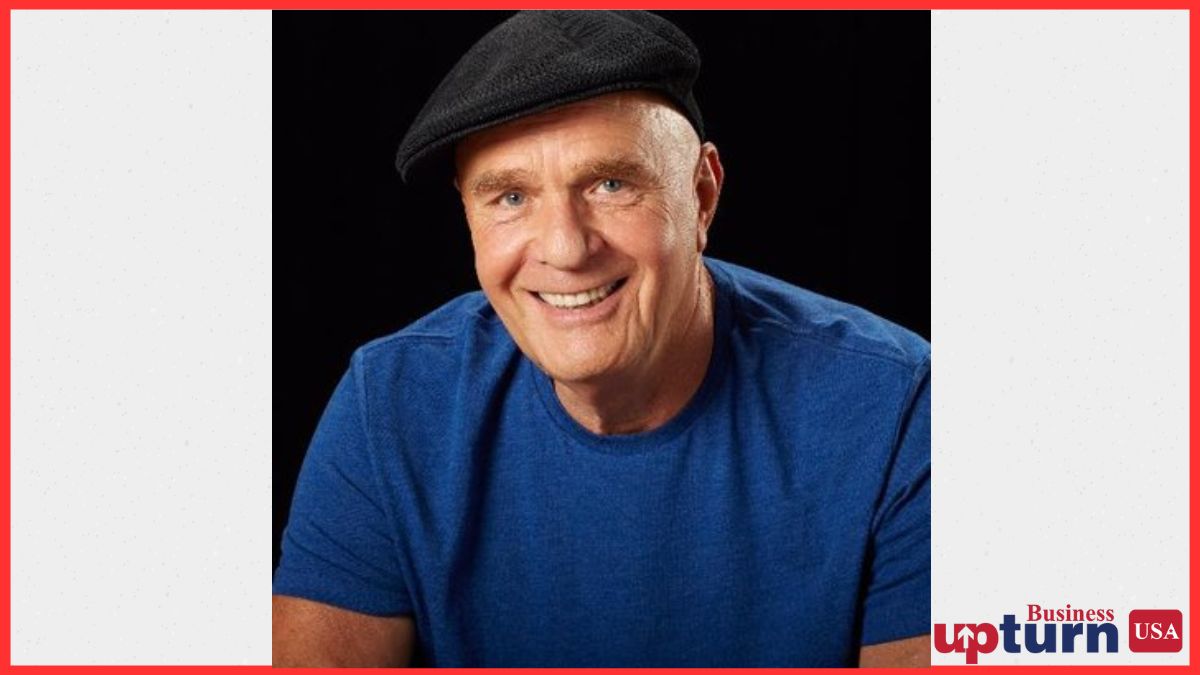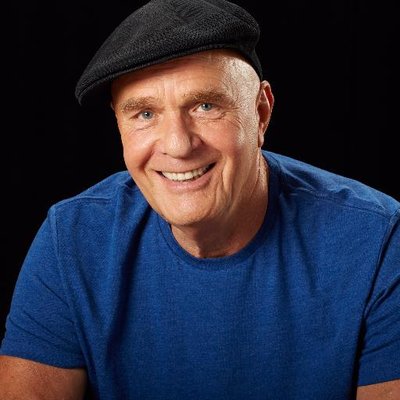
Advertisement
Dr. Wayne W. Dyer began his professional journey as a clinical psychologist and motivational speaker, but what distinguished him from his contemporaries was his early understanding of the commercial potential of personal transformation. His breakout 1976 book Your Erroneous Zones sold over 35 million copies, making it one of the best-selling self-help books of all time. But Dyer didn’t stop at writing—he transformed that literary success into a full-fledged spiritual enterprise that reached boardrooms, living rooms, and lecture halls across America.
The trajectory of the Dr. Wayne Dyer business model closely mirrors the rise of the U.S. spiritual wellness industry. He redefined what it meant to be a thought leader—not simply by disseminating ideas, but by building a system for sustainable, scalable monetisation. Dyer’s early adoption of multimedia platforms and entrepreneurial foresight placed him squarely at the intersection of commerce and consciousness. His empire would go on to include best-selling books, nationwide lecture tours, PBS specials, digital audio libraries, and lucrative licensing agreements.
The monetisation of personal transformation: Building a scalable spiritual brand
Dyer’s true genius wasn’t just in speaking or writing—it was in brand-building. Unlike traditional religious leaders or motivational figures tied to institutions, Dr. Dyer positioned himself as an independent spiritual entrepreneur. He controlled the narrative, the message, and—critically—the revenue streams. Every aspect of his public presence was engineered to scale. From repackaging books into bite-sized audio programs to broadcasting his talks through public television, Dyer understood that his message could be duplicated and sold without diminishing its impact.
The backbone of the Dr. Wayne Dyer business model was intellectual property. He transformed ideas into IP and then monetised that IP across multiple verticals. Whether through syndication, retail, digital formats, or live experiences, his business expanded without relying on a single income stream. Importantly, the brand remained stable because it was always anchored in personal transformation—a product category with perennial demand in the U.S. wellness economy.
Multi-platform content syndication: Books, public television, audiobooks, and beyond
Dr. Dyer’s commercial reach extended far beyond the printed page. His business model hinged on creating layered content pipelines that maximised audience access while diversifying revenue. At the height of his career, he had bestselling titles available in physical bookstores, digital downloads on iTunes, and programming featured regularly on PBS. This omnichannel strategy allowed him to dominate the spiritual wellness industry in the United States.
Audiobooks, in particular, played a key role in his strategy. Long before podcasting became mainstream, Dyer was leveraging audio formats to expand his footprint. By offering premium spoken-word editions of his books, complete with personal reflections and exclusive insights, he created a second-tier product line that often outsold the originals. Each format captured a different consumer niche, from readers to auditory learners to visual content seekers through televised lectures.
Strategic alliances with PBS and Hay House: Leveraging institutional trust for personal branding
Two partnerships stand out in Dr. Dyer’s monetisation playbook: his long-term alliance with PBS and his publishing relationship with Hay House. Public Broadcasting Service (PBS), known for its educational and non-commercial ethos, served as the perfect platform to lend credibility to his message. His PBS specials—televised lectures with call-to-action donation models—became cultural fixtures during pledge drives. These specials were win-win: PBS gained engaging content, while Dyer expanded his reach to millions of U.S. households with high-trust viewership demographics.
Meanwhile, Hay House—the leading self-help and spiritual publishing company—provided both distribution and brand synergy. Founded by Louise Hay, Hay House already had a robust infrastructure for spiritual authors. Dyer’s content, which blended psychology and metaphysics, found a natural home there. Their publishing strategy, which focused on evergreen titles and global rights management, ensured long-term profitability and steady royalties for Dyer’s catalog.
Turning workshops into revenue: Live events as high-margin assets
Live events formed one of the most profitable arms of Dr. Wayne Dyer’s business empire. From intimate retreats to thousand-seat auditoriums, his workshops consistently sold out across the country. These events were not only lucrative due to high ticket prices—often ranging from $100 to $300 per seat—but also served as launchpads for product bundles that included books, CDs, and later digital subscriptions.
In-person lectures allowed Dyer to generate immediate revenue while simultaneously building deeper emotional connections with his audience. His strategy included dynamic, multi-hour sessions often scheduled in U.S. cities with strong wellness cultures—Los Angeles, Austin, New York, and Boulder among them. Revenue was also generated through tiered ticketing structures, VIP meet-and-greets, and event-branded merchandise.
The psychology of pricing: How spiritual seekers became loyal paying consumers
Dr. Dyer’s pricing model was neither exploitative nor arbitrary—it was data-informed and strategically layered. He understood the psychology of spiritual consumption: people were willing to pay for transformation if the value appeared personal and actionable. Entry-level products like pocket-size books and $10 audiobooks served as low-risk gateways. Mid-tier options like workshop tickets and bundled audio courses created a scalable value ladder. And premium offerings—limited retreats or special collections—catered to high-engagement customers.
This pricing pyramid allowed his brand to appeal to both mass and niche markets. By carefully segmenting his audience and offering appropriate value at each price point, Dyer transformed spiritual seekers into loyal paying customers who often bought multiple products over time.
Licensing the self-help economy: How Dr. Dyer built passive income through content repackaging
Perhaps the most underappreciated part of Dr. Dyer’s business model was his mastery of licensing and repurposing. Much of his early content—books, lectures, workshops—was repackaged into newer formats over the years. These reissues weren’t just nostalgic; they were monetisation engines. From anniversary editions to digital archives on streaming services, Dyer ensured that no intellectual asset was left idle.
Licensing deals with retailers, digital platforms, and educational institutions allowed for passive income generation. For example, his guided meditations were not just sold through Hay House but licensed to mindfulness apps and meditation libraries. Even physical media—once considered outdated—was revitalised as collectible items with new cover art or bonus features, expanding his catalog value well into the 2010s.
Media bundles, online courses, and audiotape royalties: A masterclass in evergreen monetisation
Dr. Dyer’s use of media bundles—packaged sets of books, DVDs, and CDs—was a major revenue generator. These bundles often retailed for $50–$150 and were prominently featured on shopping channels and conference booths. With minimal additional production costs, they offered high profit margins and recurring income.
Online courses became another pillar in the later years of his business strategy. Many of these were adaptations of existing workshops or lectures, digitised and distributed through Hay House’s online platforms. Thanks to Dyer’s extensive audio recordings, course creation required minimal new input while yielding significant returns. Combined with perpetual audiotape and digital download royalties, this system of evergreen monetisation kept his content earning long after the initial creation date.
The U.S. spiritual consumer market: How Dr. Dyer tapped into America’s hunger for meaning
Dr. Dyer’s business strategy was deeply attuned to demographic trends in the U.S. By the late 1990s, America was experiencing a shift from organized religion to personal spirituality. Dyer positioned his brand at the epicenter of this shift. He provided a secular-friendly form of spiritual development that aligned with the wellness economy—one that emphasized self-growth, individual empowerment, and psychological clarity over dogma.
His content appealed to a wide spectrum of Americans: Baby Boomers disenchanted with traditional religion, Millennials seeking mindfulness, suburban parents looking for purpose, and even executives exploring holistic productivity. This broad appeal ensured cross-generational relevance, making his brand resilient to cultural shifts and economic downturns.

From middle America to Hollywood: Targeting mainstream and elite audiences alike
One of the most notable features of Dr. Wayne Dyer’s business strategy was his ability to penetrate both middle America and elite cultural circles. His televised specials and affordable books resonated with average households, while his speaking engagements and private consultations attracted celebrities and CEOs. The spiritual wellness industry USA market was large and fragmented, but Dyer’s message—delivered in accessible language—bridged social, economic, and educational divides.
This strategic inclusivity amplified his brand’s legitimacy. Whether featured on Oprah’s SuperSoul Sunday or interviewed in mainstream business magazines, Dyer’s appeal spanned socioeconomic lines. His ability to operate at both grassroots and elite levels cemented his place as a dominant player in monetising self-help in the U.S.
A legacy that prints money: How Dr. Dyer’s empire continues to generate revenue posthumously
Following his death in 2015, Dr. Wayne Dyer’s content empire did not fade—it intensified. The evergreen nature of his materials, coupled with ongoing licensing agreements, has allowed the brand to remain profitable. Hay House continues to release reissued works, bundle collections, and digital exclusives, all under Dyer’s name. His content has been ported to platforms like Audible, Apple Books, and subscription-based wellness apps.
Digital reissues and commemorative editions have found new audiences, particularly among Gen Z and Millennial spiritual consumers who prefer on-demand, mobile-accessible content. The brand has also maintained social media visibility through legacy pages that promote re-releases, events, and anniversary specials.
Brand continuity through licensing and digital re-issues in the post-2015 era
Dyer’s estate and publishing partners have implemented a seamless brand continuity strategy. Key to this has been licensing—his image, voice, and message continue to be used across documentaries, podcasts, and digital learning platforms. Hay House, known for its aggressive digital marketing strategy, ensures Dyer remains relevant through targeted email campaigns, influencer collaborations, and curated content collections.
This approach has enabled the posthumous monetisation of Dyer’s brand to rival its lifetime performance. Thanks to evergreen content and smart IP management, the Wayne Dyer business model remains a template for how legacy figures can dominate the wellness economy even after death.
A unique business angle no one discusses: How Dr. Dyer monetised trust in a post-religious America
Trust is one of the most undervalued currencies in the self-help marketplace, and Dr. Wayne Dyer understood how to monetise it. In a country increasingly skeptical of institutions, he offered personal conviction over doctrinal authority. His brand operated outside of religion, academia, or corporate consultancy, yet he was trusted more than many figures from those domains.
This model—monetising trust in a post-religious America—allowed him to sell transformation as a secular-spiritual hybrid. Without institutional gatekeeping, Dyer was free to adapt, evolve, and commercialise on his terms. That trust translated directly into consumer loyalty and long-term revenue. It also positioned him as a prototype for today’s wellness influencers who seek to capitalise on authenticity and relatability rather than credentials.
The secular-spiritual hybrid model: Packaging transformation as a product without institutional oversight
At the heart of Dr. Wayne Dyer’s success was his ability to turn inner change into an external product—without relying on religious validation or academic frameworks. This secular-spiritual hybrid model gave him broad reach and unregulated commercial freedom. His teachings became consumable, his voice downloadable, his presence monetisable.
In doing so, he pioneered a business model that now underpins the modern wellness economy—from Instagram therapists to AI-generated guided meditations. As the future of spiritual entrepreneurship evolves, Dyer’s model of platform-independent monetisation may become the blueprint for a new generation of tech-savvy, spiritually oriented entrepreneurs.
Conclusion: Dr. Wayne Dyer’s monetisation model isn’t just a legacy—it’s a prototype. As AI, streaming, and self-help tech expand, his business playbook offers enduring lessons for the next wave of digital wellness leaders.
This article is intended for informational and editorial purposes only. It does not constitute endorsement or promotion of any individual, company, or entity mentioned. Business Upturn makes no representations or warranties regarding the accuracy, completeness, or reliability of the information provided.
